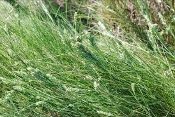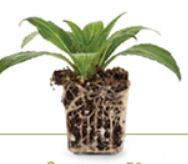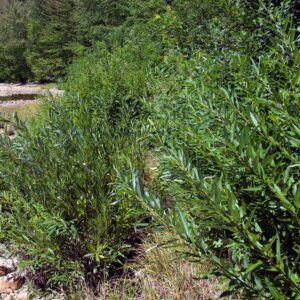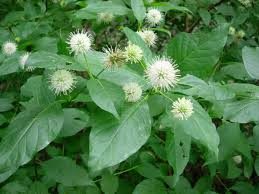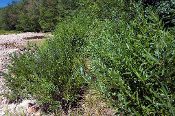$7.50
Distichlis spicata, Saltgrass, Native Grasses, Perennial Grass Plugs, Native Wetland Grass
Wholesale pricing is based on quantity. 50 plants (plugs) per tray with a required minimum purchase of 5 plants per species.
5 or more $7.50 each
25 or more $3.50 each
50 or more $1.65 each
300 or more $1.50 each
1,000 or more $1.40 each
3,000 or more call
For Shipping, Planting and additional FAQ’s please see “About our organically grown native plug trays “.
See all available Native Perennial Grasses & Organically Grown Plug Trays
Order Minimum
There is a minimum order total of $150.00.
before tax (VA residents only) and shipping.
There are NO EXCEPTIONS.
Description
Distichlis spicata, Saltgrass, Native Grasses, Perennial Grass Plugs, Native Wetland Grass
Botanic Name (s): Distichlis spicata,
Common Name(s): Saltgrass
Height: 0.5-1.5’
Flowers: Aug-Oct
Light: Full sun
Moisture: M W
Soil pH: 6.4-10.5
Soil type: C L
Flood Depth:
Salinity: 0-50 ppt
tidal salt marshes,
from Mean High tide
above to spring tide
level; high salinity; wet
depressions
Region: C
States:
DC DE MD
VA
often intermixed with
Spartina patens, forms
Erosion Control Four Season Interest
Average Wildlife Value: Songbirds Small Mammals
FACUpl- Occur in wetlands and non-wetlands
Native To Mountain Regions
Native to Piedmont Regions
Native to Coastal regions
Landscaping and Wildlife: Distichlis spicata is an
abundant grass found throughout the coastal wetlands
along the Gulf of Mexico. It has been used
successfully in coastal wetland restoration projects as
a pioneering species. It is also valuable for the
reclamation of inland, high salinity areas, such as salt
water spills associated with oil production sites.
Ducks have been known to feed on the seed, and
geese will graze it in the fall, especially if it has been
recently burned. It is also an important food source
for the larvae of the Wandering Skipper Butterfly and
the Florida Salt Marsh Vole.
Ethnobotanical: It is reported that Native Americans
collected the salts extruded from the leaves of this
plant, and used them to flavor foods. Saltgrass is also
used in modern pharmaceuticals to treat respiratory
allergies.
Saltgrass is a low growing, rhizomatous, sometimes
stoloniferous, warm season, perennial grass. The
leaves are short, paired, sharply pointed, and erect
giving this grass a spiky appearance. The leaf
sheaths overlap tightly on the stem, adding to the
scaly appearance associated with the rhizomes.
Saltgrass will grow from 6 to 18 inches in height, and
produces both male and female plants. New plants
often produce a star like pattern on bare ground as
rhizomes radiate away from the mother plant.
Saltgrass is capable of creating dense stands under
favorable conditions. It generally produces few seed
heads compared to the number of stems, and the seed
heads are typically pale green in color. Salt crystals
are usually present on the leaf blades in highly saline
areas.
Distichlis spicata, Saltgrass, Native Grasses, Perennial Grass Plugs, Native Wetland Grass
